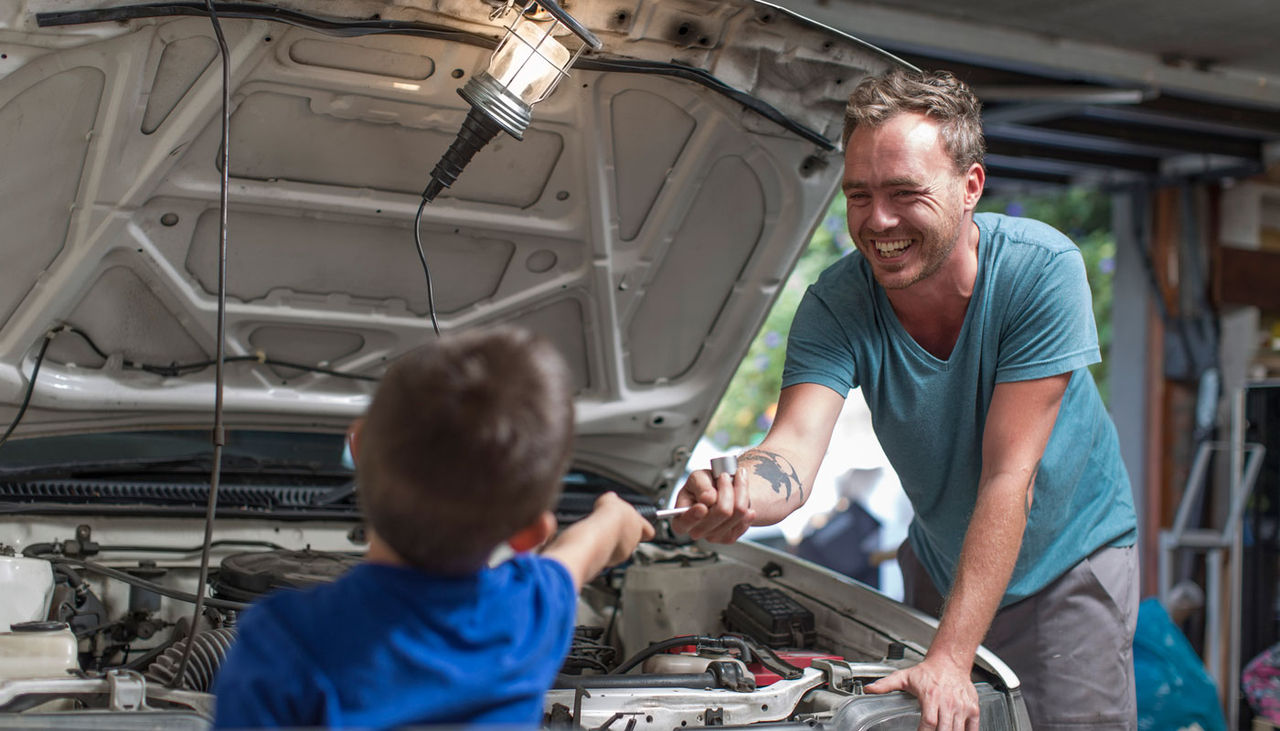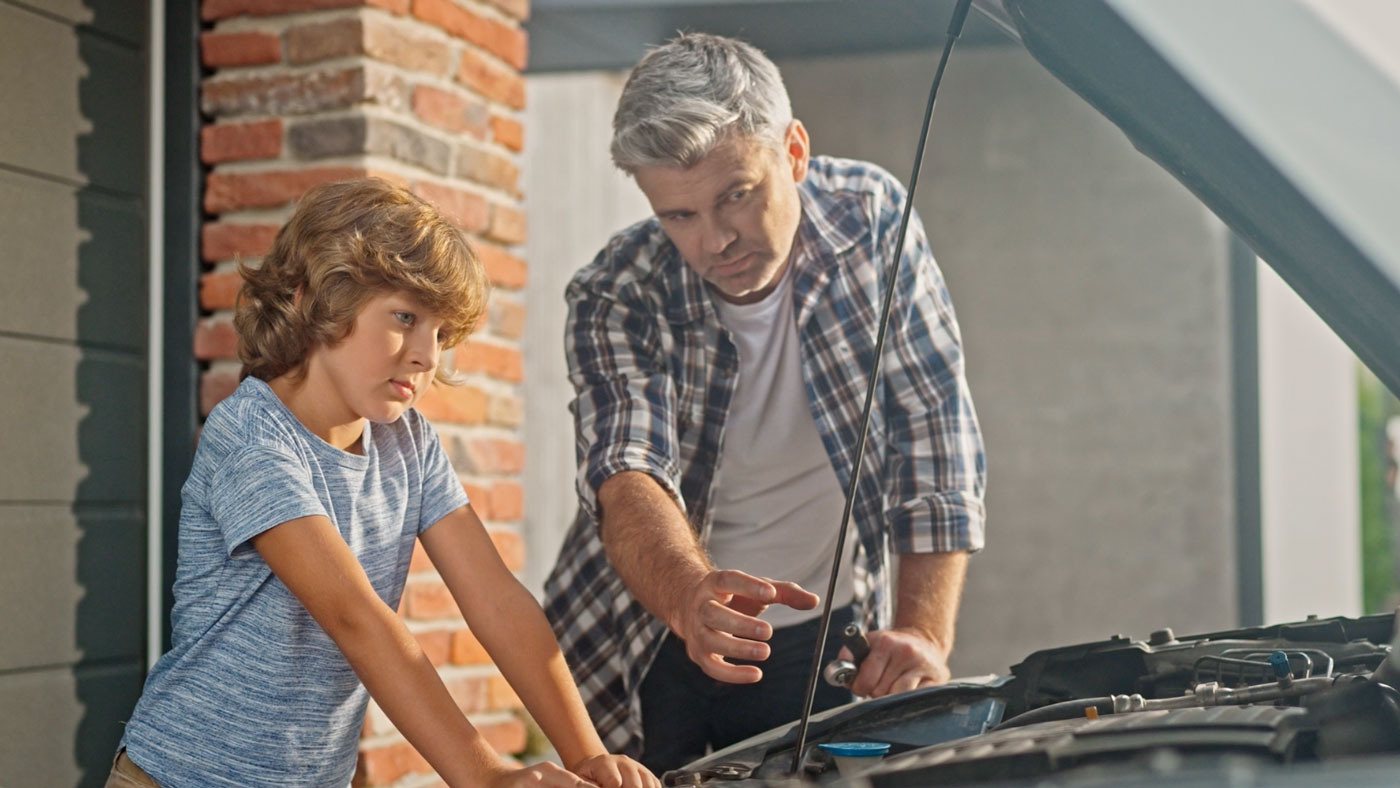To ensure you receive the best service possible,
please enter your zip code below:

This article explores the importance of teaching car care to children as a life skill. It covers:
As a parent, you want to see your child succeed. You want them to grow into responsible, capable adults who treat themselves and each other with respect. They learn some of the basics at school, but they pick up habits and discipline from being around you.
One of the best things you can teach is the value of taking care of the things that belong to them. This is especially true when it comes to car care. Not only will imparting this knowledge save them time and money, but it will also create memories between you and your child that will last a lifetime. So where do

Teaching your kids important life skills like car care maintenance is crucial for a variety of reasons. By teaching car maintenance to children of all ages, they learn responsibility, independence and confidence, laying a strong foundation for adulthood. Other aspects of life that learning about car care can provide to kids include:

You’ve heard the question before. Typically, it comes immediately after you’ve asked your child to do something. It’s the proverbial WHY.
For you, teaching car care is about setting your child up for success. For them, it’s about gaining a basic understanding of how the vehicle works and why it’s important to take care of it.
Explaining the “why” behind car maintenance helps them see the value in these tasks and makes the lessons stick. Here are some common “why” questions and their answers:
By answering these “why” questions, you show your child that car care isn’t just a chore—it’s about keeping their vehicle safe, reliable and long-lasting.

You can start before your child is in kindergarten. Will they be changing tires? No. Start them with something small and progress with them as they get older.
Below is a breakdown of skill sets that are appropriate for various age ranges, although you will be the best judge of your child’s aptitude.

Below is a list of basic skills that will benefit your child as you teach them car care and some simple step-by-step processes to accompany them.
Oil is essential for your engine to function properly. It keeps parts lubricated and prevents overheating.
Proper tire pressure improves fuel efficiency, longevity and safety. It’s important to check this once a month and before a long trip.
Waiting until your gas gauge reads “E” is not good for your vehicle and could leave you stranded. It is best to fill your tank when you have at least a quarter tank left. If you run low on gas, sediment from the tank could find its way into your fuel system, clogging filters and injectors.
Knowing this essential skill will help your child help themselves if they end up stuck on the side of the road because of a blowout.

Part of the fun of teaching car care to children is that, over time, you can help them build out a basic set of tools that they can use once they are old enough to own a car. Whether the tools are new or a family memento, building a car tool kit should include tools that can handle common maintenance tasks and emergencies.
A tire pressure gauge is important for checking tire pressure regularly. Teaching the proper inflation improves fuel efficiency, extends your car’s tire life and ensures safety.
A portable air compressor is important to have on hand. If the tire pressure is low, it allows drivers to inflate tires on the go, preventing potential blowouts or damage caused by underinflated tires.
Another must-have for your child’s tool kit is a set of jumper cables or a portable jump starter. Dead batteries can happen unexpectedly, and jumper cables allow drivers to restart their car with the help of another vehicle.
A basic tool kit with items like a wrench, screwdriver and pliers is also invaluable for small repairs, such as tightening loose bolts or replacing a battery terminal.
Lastly, a flashlight (preferably a rechargeable or battery-powered one) is crucial for visibility during nighttime breakdowns or repairs.
These tools prepare kids to understand how to be ready for unexpected situations and can also build their confidence and independence on the road.

Teaching your child how to manage car emergencies is just as important as teaching them basic maintenance. Breakdowns or accidents can happen to anyone and knowing how to act calmly and safely can make all the difference.
Start off by explaining the first steps they should take in any emergency: Stay calm, pull over to a safe location and turn on the hazard lights. Explain to them why having the car’s hazard lights on can alert other drivers that there’s an issue and help keep everyone safe on the roadside.
Next, teach them how to assess the situation and decide whether to call for help. If they’re dealing with a flat tire or a dead battery, they may be able to handle it themselves if they’ve learned the proper skills.
For more serious problems, make sure they know how to reach roadside assistance or emergency services. Remind them to stay inside the vehicle if it’s safe or, if they must get out, to stand well away from traffic.
Having an emergency car kit is also essential. Equip their car with items like a flashlight, jumper cables, a tire repair kit, a first-aid kit, bottled water and a blanket. These tools can help them stay safe and comfortable while waiting for help to arrive.
By preparing your child for the unexpected, you’re giving them the confidence and knowledge to handle emergencies responsibly and safely.
When you’re teaching your child about car care or car repair, it is important to stress safety. When working on the vehicle, a level location in a well-lit area is essential. It is important for you to be present as they try their hand at any of the skills mentioned above, especially if they are using tools, near moving parts, or suspending tires from the ground. All it takes is one wrong move and they could wind up pinned under several thousand pounds of metal.
When working on a vehicle, encourage them to engage the emergency brake and place wheel chocks behind the tires. Make sure the engine is off unless the specific task requires it to be on. If the engine needs to be on and you’re working in a garage, make sure they know to keep the garage door open. Communicate the importance of keeping loose clothing, fingers and hair away from fans and belts.
drivers of all ages
You can trust AAA to help. AAA Members receive a free vehicle maintenance inspection upon request with any paid service at a nearby AAA-owned Car Care center or AAA Approved Auto Repair facility, a 36-month/36,000-mile guarantee on repairs at AAA-owned Car Care locations, and a 24-month/24,000-mile warranty at AAA Approved Auto Repair facilities. Members also receive a 10% discount on repair labor (save up to $75).
A: Teaching kids car care helps them develop responsibility, independence and confidence. It also prepares them for emergencies, enhances safety awareness and fosters financial literacy by showing them how to save money through proper maintenance.
A: You can start as early as preschool with simple tasks like rinsing the car or vacuuming mats. As they grow, you can introduce more complex tasks like checking tire pressure, changing wiper blades and eventually, changing oil or rotating tires.
A: Essential tools include a tire pressure gauge, portable air compressor, jumper cables or a portable jump starter, a basic tool kit (wrench, screwdriver, pliers), and a flashlight. These tools prepare them for common maintenance tasks and emergencies.
A: Gamify tasks by timing how quickly they can check tire pressure or rewarding them for completing a task. Encourage questions and make it a bonding experience by working together on the car.
A: An emergency car kit should include a flashlight, jumper cables, a tire repair kit, a first-aid kit, bottled water, a blanket and any other items that might help in a roadside emergency.